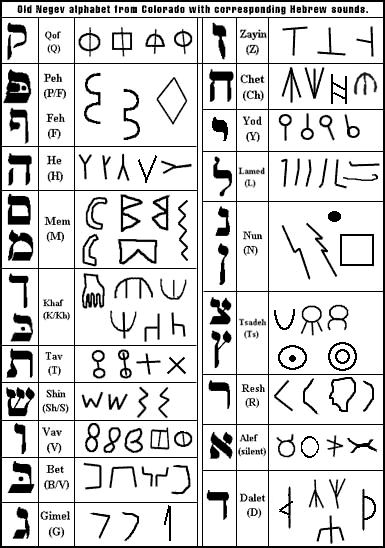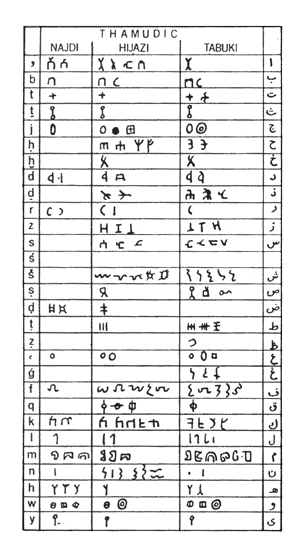The Alphabet contains basic, distinct geometric shapes that correspond to established phonetic sounds. Certain letters have more than one symbol so that they can be used consecutively with either inclusion or exclusion of the corresponding word. Since there are no word breaks (spaces) in this language, this is a natural requirement. The vowels (except for Y) are almost always omitted, unless they are necessary to distinguish precise meaning. Most words have one sylible.
The alphabetical symbols were originally found pecked in stone. The stone surface is typically flat and has a dark patina of oxidized minerals, similar to a blackboard. The surface is breached with a sharp object, removing small chunks of the patina and revealing the bright contrasted stone. The bright petroglyphs gradually darken with age making them visible only with oblique lighting and shadows. An exception to this was the discovery of the Sabaean font in Yemen, which utilized the finest masonry and carving techniques. The Yemen text was also found cast in bronze and printed with movable typographic characters. The alphabetic symbols are often arranged in groups that can be mistaken for pictures or maps. These "ligatures" can be broken down into discrete letters and phrases. Curiously, many of the ligatures are made such that the word meaning is conveyed both phonetically (for those that can read) and symbolically. A typical word or phrase will have two or three symbols in length. The direction of flow and the grammar are explained in detail in subsequent papers linked from this page. |

 Earlier attempts to translate the symbols failed because the alphabet was believed to be proto-Arabic [right]. This was a natural assumption since the symbols were first seen only in the Sinai and the Arabian peninsula. However, translations have successfully been made by using an old Semitic dialect that ore-dates Hebrew.
Earlier attempts to translate the symbols failed because the alphabet was believed to be proto-Arabic [right]. This was a natural assumption since the symbols were first seen only in the Sinai and the Arabian peninsula. However, translations have successfully been made by using an old Semitic dialect that ore-dates Hebrew.